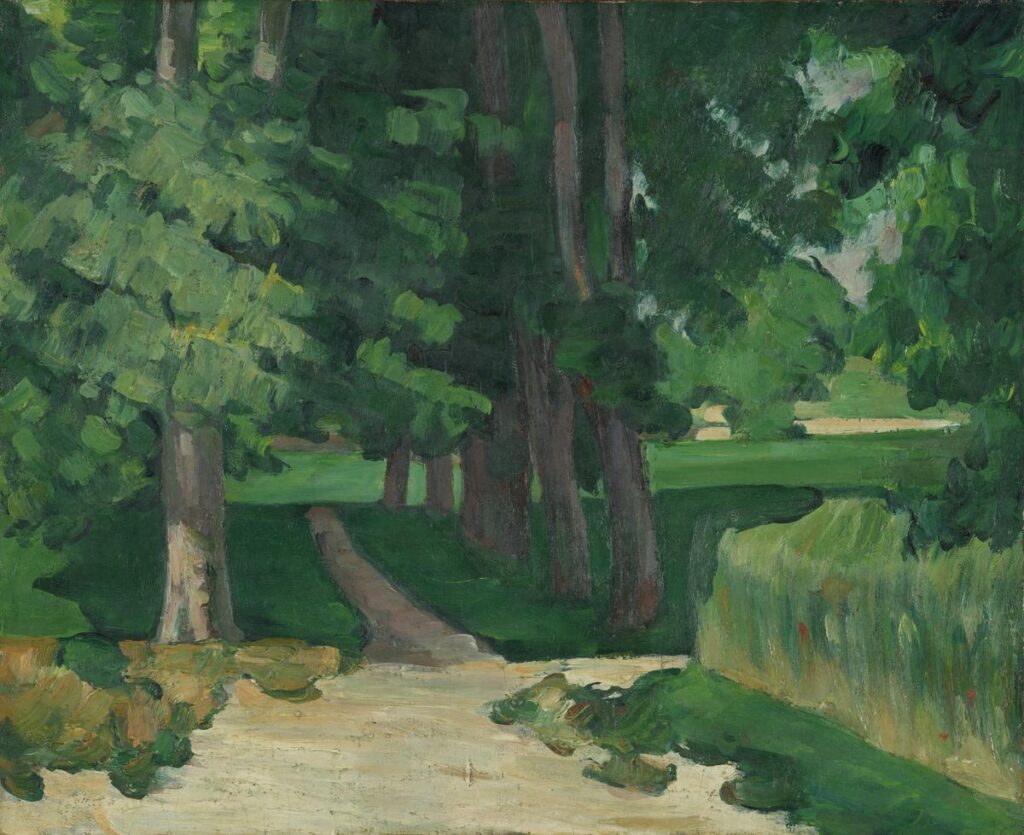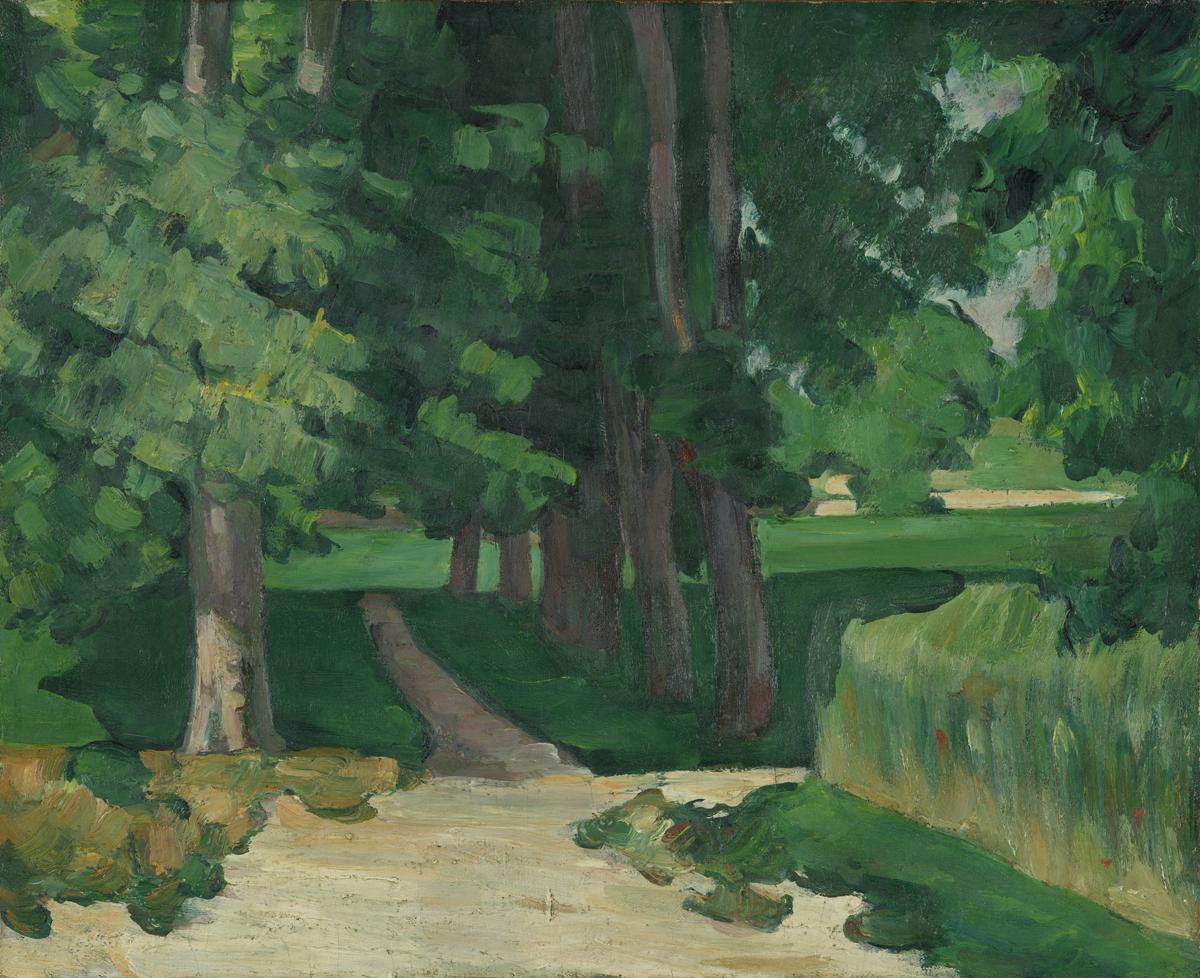1 December 2022
Cezanne
Tate Modern to 12 March 2023
by William Morton

Paul Cezanne (1839-1906) came from a wealthy family in Aix-en- Provence . While this had its advantages, the drawback was that he had to stay on reasonable terms with his father in order to continue to receive an allowance. While he did resist his father’s wish that he become a lawyer and join the family bank, he did not feel able to reveal to him for a long time that he had a mistress, Marie-Hortense Fiquet, by whom he had a son and whom he eventually married. At the urging of his old schoolfriend, Emile Zola, he moved to Paris to pursue an artistic career but throughout his life shuttled between Paris and Aix spending more and more time at Aix, where his family had an estate, Jas de Bouffan, in later years.
It is difficult to get a feel for Cezanne’s character. The Exhibition booklet suggests he may have had left wing views like his friends, Zola and Camille Pissarro, but there does not seem much to support this. He sat out the Franco-Prussian War of 1870 in the village of L’Estaque near Marseilles to avoid conscription. He painted Marie-Hortense many times but the pictures of her in the Exhibition give no clue as to her character. Their relationship eventually broke down and they effectively separated but he did not, as far as one can tell, thereafter take anybody else into his bed.
He clearly thought deeply about his art and what he wanted to achieve, saying, for example. ‘Painting from nature is not copying the object; it is realizing one’s sensations’ and ‘With an apple I will astonish Paris’. One insight into his nature is perhaps given by the first painting in the Exhibition, Self-Portrait in front of a Pink Background, which shows him with a distinctly quizzical look.
One characteristic of Cezanne was that, if he found a subject that appealed to him, he returned to it time and time again. The Exhibition reflects this, devoting whole rooms to still lifes of fruit and paintings of bathers, L’Estaque and Mont St Victoire outside Aix. The landscapes such as The Sea at L’Estaque behind Trees and the views of the mountain and others in the Exhibition such as Rooftops in Paris and The Avenue at Jas de Bouffan are wonderful. The fruit still lifes are also striking, although it is difficult to say quite why they appeal so much.
The bather pictures I found much harder to like. No attempt is made to humanise or sensualise the figures – indeed in some cases they are almost cartoonish. The best known of the series, and which is much admired, is Les Grandes Baigneuses. While there is a nod to classical scenes of nymphs by springs, Cezanne dehumanises the bathers. While they are recognisably female, they are just part of the scene like a herd of animals.
Cezanne had an enormous influence on other artists such as Gauguin, Monet and Matisse, all of whom owned paintings by him and Cubism was a natural development from his work. There are some aspects of it which the Exhibition does not show. He did some good portraits of his family in a traditional style when young. He did also paint some works showing human interaction such as the well-known The Card Players where their concentration is clear. True to form, Cezanne painted five versions of it. Having said that, there are many magnificent pictures in the Exhibition and it is one not to miss.


